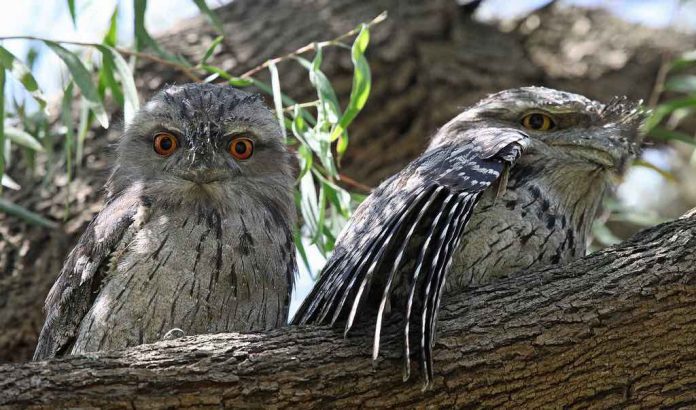A Griffith University-led collaboration has used DNA analysis to resolve the evolutionary origins of the distinctive Australian frogmouth species of bird.
The Tawny Frogmouth is one of 13 frogmouth species that occur across Australia, New Guinea, the Solomon Islands, and tropical Asia.
Its distribution has long raised questions: did frogmouths spread out from Asia to Australia, or from Australia to Asia? And how did these stay-at-home birds cross such wide seas?
In a paper published in Biology Letters, Dr Paul Oliver, from Griffith University’s Environmental Futures Research Institute and the Queensland Museum, in collaboration with colleagues from Museums Victoria, CSIRO and University of Adelaide, investigated the genetic divergence amongst frogmouths from Asia, Australia, New Guinea, and the Solomon Islands to solve this evolutionary riddle.
“Molecular differences between Asian and Australian frogmouth indicate that they diverged and dispersed between the two regions around 30 million years ago, making frogmouths one of the first bird groups to voyage south into Australasia,” Dr Oliver said.
Thirty million years ago, island arcs stretching out from Asia across the south-west Pacific towards Australia, may have formed a chain over 1000 kilometres long.
“A highly genetically divergent lineage of frogmouth in the south-west Pacific suggests a stepping-stone colonisation of these ancient island arcs between the two continents,” Dr Oliver said.
“We think frogmouths used these ancient island arc systems, first to move out of Asia and then as staging grounds for the subsequent colonisation of Australia,” said Dr Keiren Mitchell from the Centre for Australian Biodiversity and Heritage, University of Adelaide.
“So despite leaving Asia 30 million years ago, they may have only arrived in Australia much more recently.”
Dr Oliver argues that the role of island arcs in shaping the evolution of the Australian animals and plants has been systematically overlooked.
“This highlights the crucial conservation value of these islands threatened by rapid population growth, climate change, habitat loss and introduced species, Dr Oliver said.
“These discoveries, and the role of the island arcs, set the stage for the next exciting phase of understanding how Australia’s remarkable biodiversity was assembled.”




